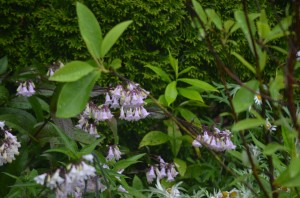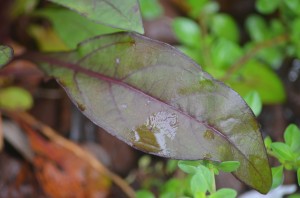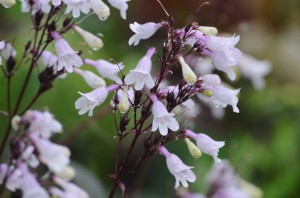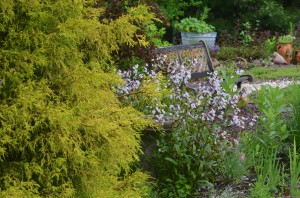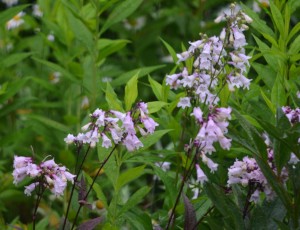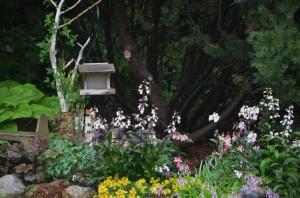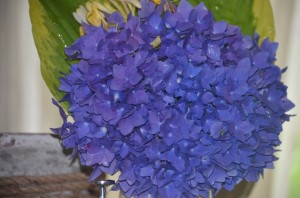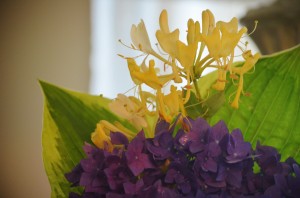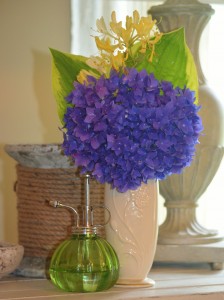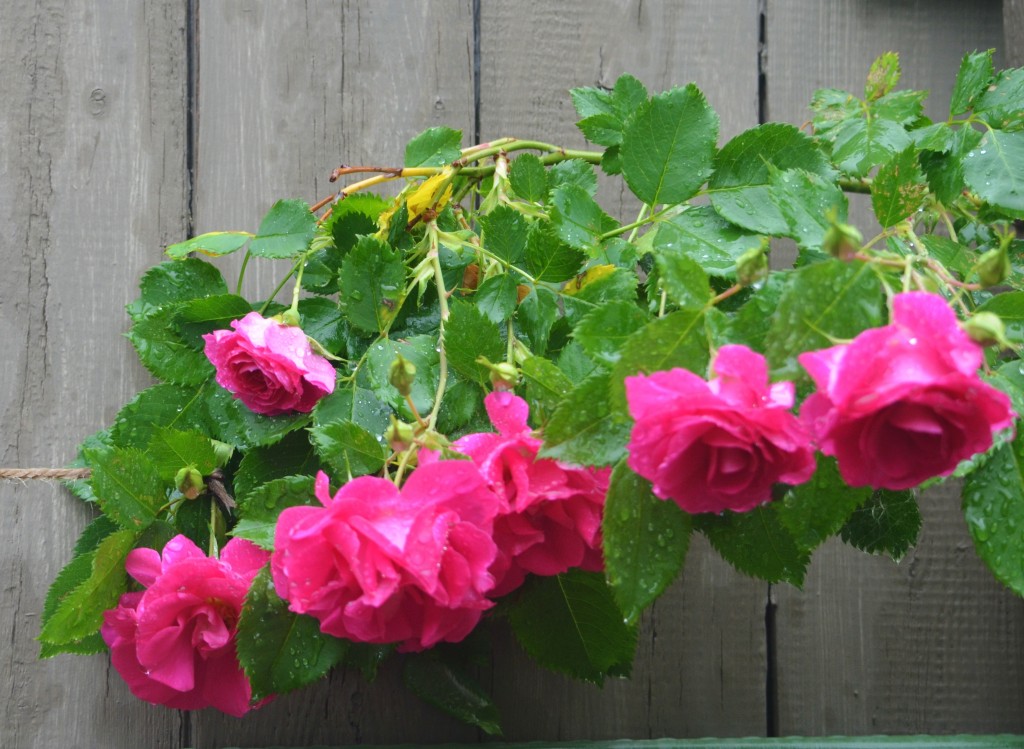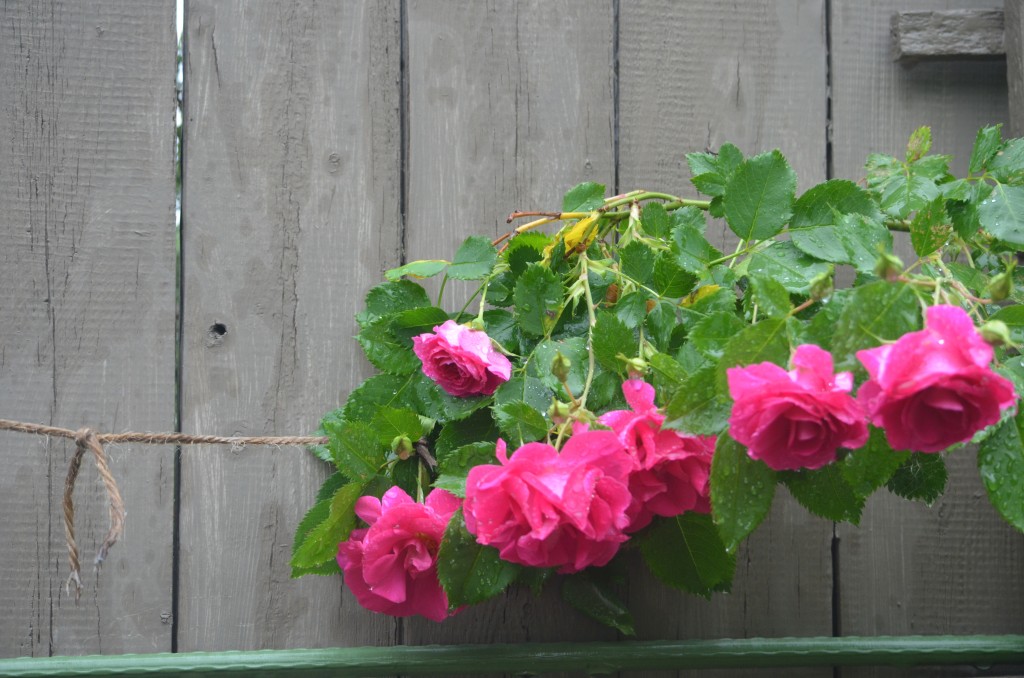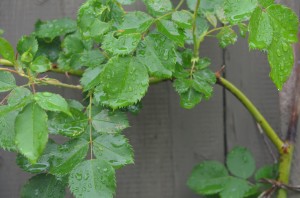Just a quick word about the timeliness of this post. I had originally planned it in late May, even took pruning photos and jotted notes, then promptly forgot bout it. Today fellow Blogger, Matt Mattus, (from whom I have learned volumes of things and am hoping to return even the slightest of favors to )over at Growing With Plants jogged my memory when he mentioned trying lavender in his gardens. Like many people who live where it is cold and wet, he has found success elusive.,, , but have faith , it is possible and the result of any effort given to grow it right will be a fragrant delight!
My love of English gardens and fragrant plants led to my love of lavender. I have heard many a gardener in these parts lament the fact that we can not have gorgeous lavender “hedges” and enjoy loads of this wonderfully scented herb to cut , but really with a few steps of preparation and a annual pruning we can grow lavender quite easily in the Northeast US.
The first thing you need to do is prepare the area. Lavender wants, above all else, good drainage. Perfect drainage in fact. No moisture retentive soils , no bog or standing water. Ever.
If you have rich or heavy soil, work in quite a bit of sand and gravel, and as extra insurance, even build the planting level up above the existing ground level. Here,in The Burrow, we have a base of pure sand under everything and I still work in some gravel and raise the lavender plants up because in the winter time we have snow cover for a long time and that snow melting in spring is a danger to the rotting base of the plants if it sits too long. That site prep of gravel and sand and raising the planting level will make all the difference in long term survival.
As to water, I will tell you that a.) it is humid here and b.) my lavender are all planted in areas that are irrigated with the rest of the gardens throughout the season and although they like it dry they are fine because their drainage is so good. Some are planted open areas, others nestled in tight corners. which goes against most advice you will hear ;again it is all in the drainage. It must be PERFECT!
The second key to long term success is an annual pruning. In the late spring, AFTER you start to see the green growth emerging on the lavender ( which could be as late as the last week of May), it is important to trim the whole plant back to as close to the ground as you can WITHOUT cutting past the green and live growth. If you cut below where you see green, ( or greenish-gray to be precise) you will be cutting into unproductive wood that will not regenerate .
I get many questions when I am out and about regarding lavender that was previously happy but now is woody and not blooming I have even heard it told that every two to three years you must replace lavender in order to have lots of flowers. Untrue! .Almost always the issue is that it has not been pruned annually and the wood has gotten old and therefore unproductive. Even missing one or two years will mean woody shrubs that bloom little and look like a craggy shaggy mess.
The third path to success is choosing the right lavender to begin with. There are over 30 species of lavender but the one I have had the most success with is lavandula angustifolia. There are many varieties of this species to choose from, but the bulk of my hedges are ‘the very floriferous’ Hidcote Blue ‘ and “Munstead’ ( both named after English gardens)., and I also grow a smaller shrub called ‘Lavenite Petite’ These original plants of these varieties have been happily living in my gardens for over 12 years, which is a long time for lavender to remain productive, but I never miss a pruning and the were planted right to begin with.Below you can see a part of the lavender hedge that lines the fence out front right after pruning., and below that what it looked like today.
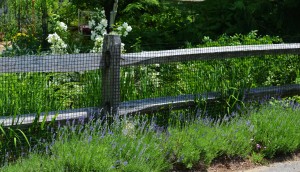 I have tried many others ,with mixed success. For a few years some of the varieties of lavandula x intermedia did well including the white variety of ‘Grosso’ and the super fragrant ‘Provence’. But after particularly wet winters they did not survive.
I have tried many others ,with mixed success. For a few years some of the varieties of lavandula x intermedia did well including the white variety of ‘Grosso’ and the super fragrant ‘Provence’. But after particularly wet winters they did not survive.
Last year I heard of a newer introduction called lavandula x intermedia ‘Phenomenal’ that shows great hardiness and gets good garden reviews but alas, I had to relocate the plants that make up the lavender hedges in the pool area for construction ,so will have to wait until they are all back until I have some space to add new ones.
Having loads of lavender is just , as Martha says, a wonderful thing. I used youtube to teach me how to make lavender wands, which I give as gifts to the hosts when I visit open gardens . I fill sachets for the drawers, and I was still cutting the foliage for arrangements in February.
So remember…sand and gravel, raised planting and annual pruning are the down and dirty keys to success for growing lavender in the Northeast.
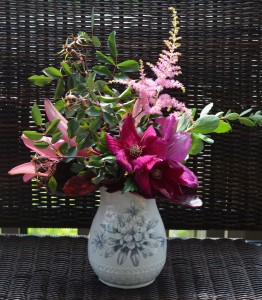
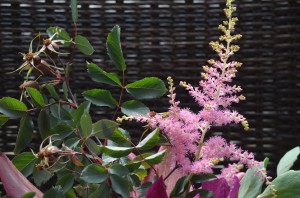
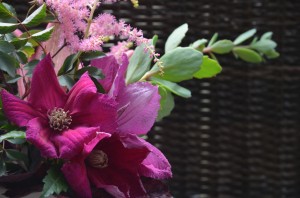
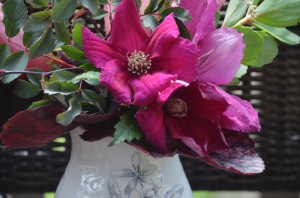
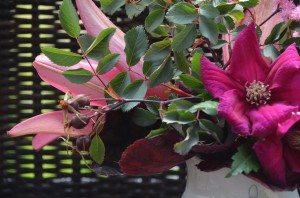 Madison’ lilies you can’t see well . The astillbe will last only for a few days, but the clematis should last a week or more, as will all of the foliar elements. If any of you are celebrating with me, please link back or add a link to your photos on any social media so I can check them out!
Madison’ lilies you can’t see well . The astillbe will last only for a few days, but the clematis should last a week or more, as will all of the foliar elements. If any of you are celebrating with me, please link back or add a link to your photos on any social media so I can check them out!



